Lobelia Care - Learn How to Keep It Blooming All Summer!
Lobelia is a plant also known as cardinal plant. There are over 400 different types of lobelia all over the world. It looks perfect on flowerbeds and in containers. The biggest advantage of this plant is the ease of taking care of it. Because of this, it's often picked by inexperienced gardeners. It's a great garden decoration. Check its needs and learn how to care for lobelias.
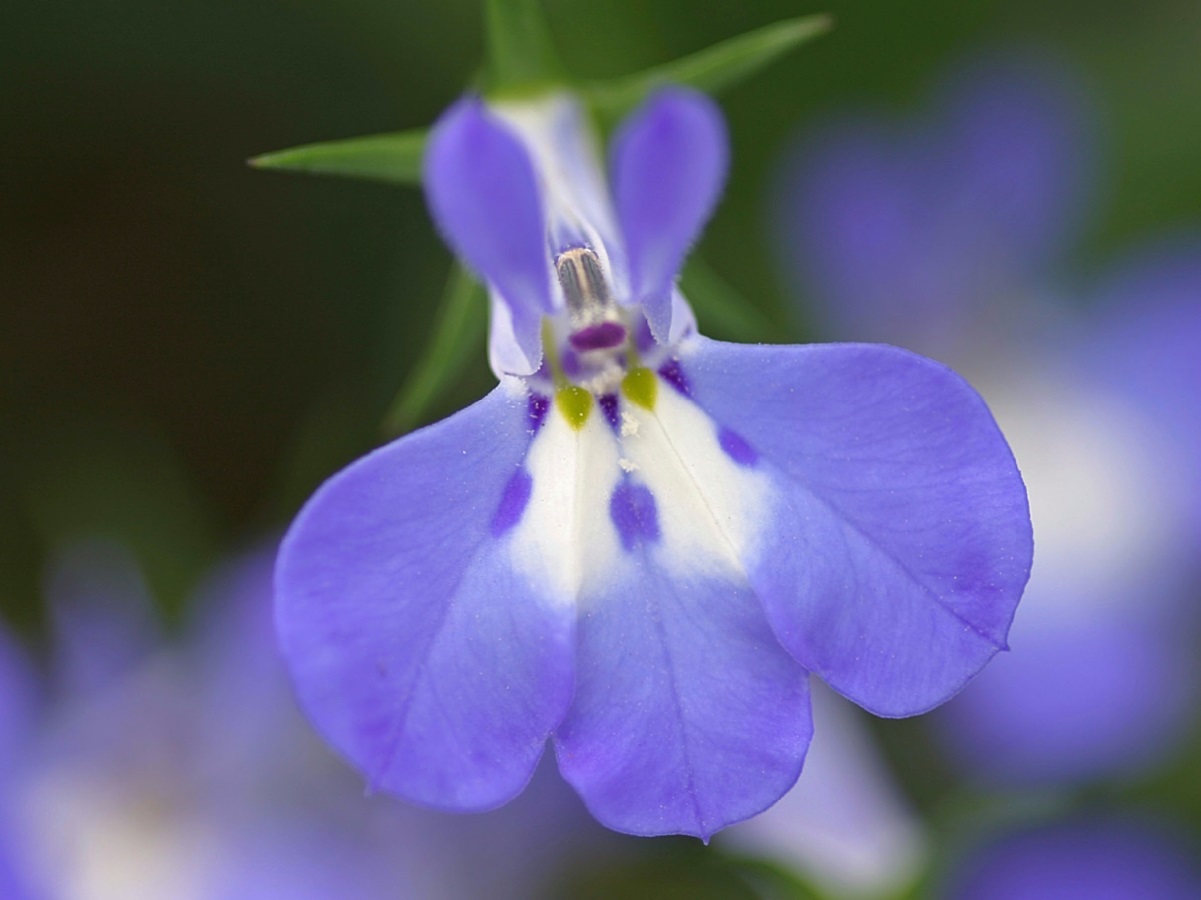
Lobelia – what kind of plant is it?
Lobelia is one of the most characteristic flowers, picked mostly for its decorative aspects and rich blooming. South Africa is its parent region, where it grows naturally. In that area, there are a few hundreds of types of lobelia.
Lobelia erinus is used in many ways – varieties with hanging flowers are popular on balconies and patios, while shorter types are often planted directly in the ground.
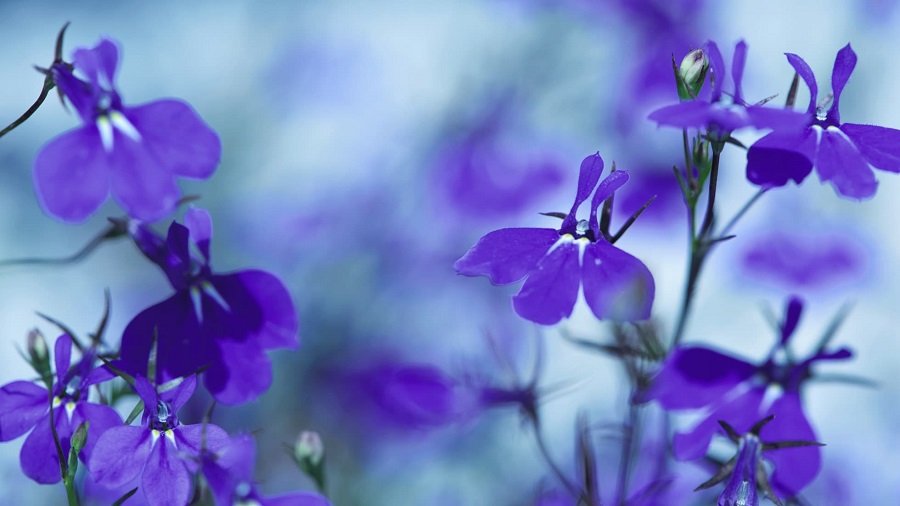
Lobelia – annual or perennial
Lobelias are typically grown as annuals. But there are also several varieties of perennial lobelias - thanks to which you can enjoy their beautiful blooming for longer.
Perennial lobelia varieties can be perfectly combined e.g. with day lilies and pyrethrums. When deciding what to choose, consider which type is the most convenient to grow.
Lobelia – a flower of many varieties
Lobelia is very popular, and thanks to the plenitude of its varieties, one can use them to compile a perfect set of garden plants. A few types of lobelias are most common among gardeners over the world.
Lobelia erinus includes mostly annuals, which grow up to 30 centimeters tall. Clusters of small flowers grow on the stalks – they are shiny. All varieties are valued for their long blooming period – red and blue lobelias keep their flowers until November.
There are many types of lobelia, but certain varieties are characteristic for their small size and rich blooming.
Here are the most popular and commonly chosen lobelia varieties:
- ‘Crystal Palace’ – with dark blue flowers and brown-green leaves,
- ‘Blue Carpet’ – it has characteristic blue flowers,
- ‘Mrs Clibran’ – a blue lobelia with a peculiar white spot on the flowers,
- ‘Rosamund’ – a red lobelia with small white dots on the flowers,
- ‘Rose Moon’ – a pink lobelia,
- ‘White Lady’ – a white lobelia,
- ‘Lilac’ – with white-pink flowers,
- ‘Mitternachtsblau’ – with purple flowers.
Some lobelia varieties have long stems – they’re perfect for growing in containers. They are typically placed on a balcony or a patio. Three such varieties are particularly interesting:
- Fountain,
- Cascade,
- Regatta.
Lobelia flowers can be single-colored or display a mixture of at least two shades. Blue, violet and scarlet are the most commonly repeating colors of lobelias.
Great lobelia - Lobelia siphilitica – is a type of perennial which grows even 80 centimeters tall. It has characteristic, egg-shaped leaves with serrated edges. This variety blooms in July, and the blue or white flower clusters remain until the end of September. It’s a perennial lobelia – even very low temperatures of -29°C (-20.2°F) cannot harm it, despite lack of any protection in winter.
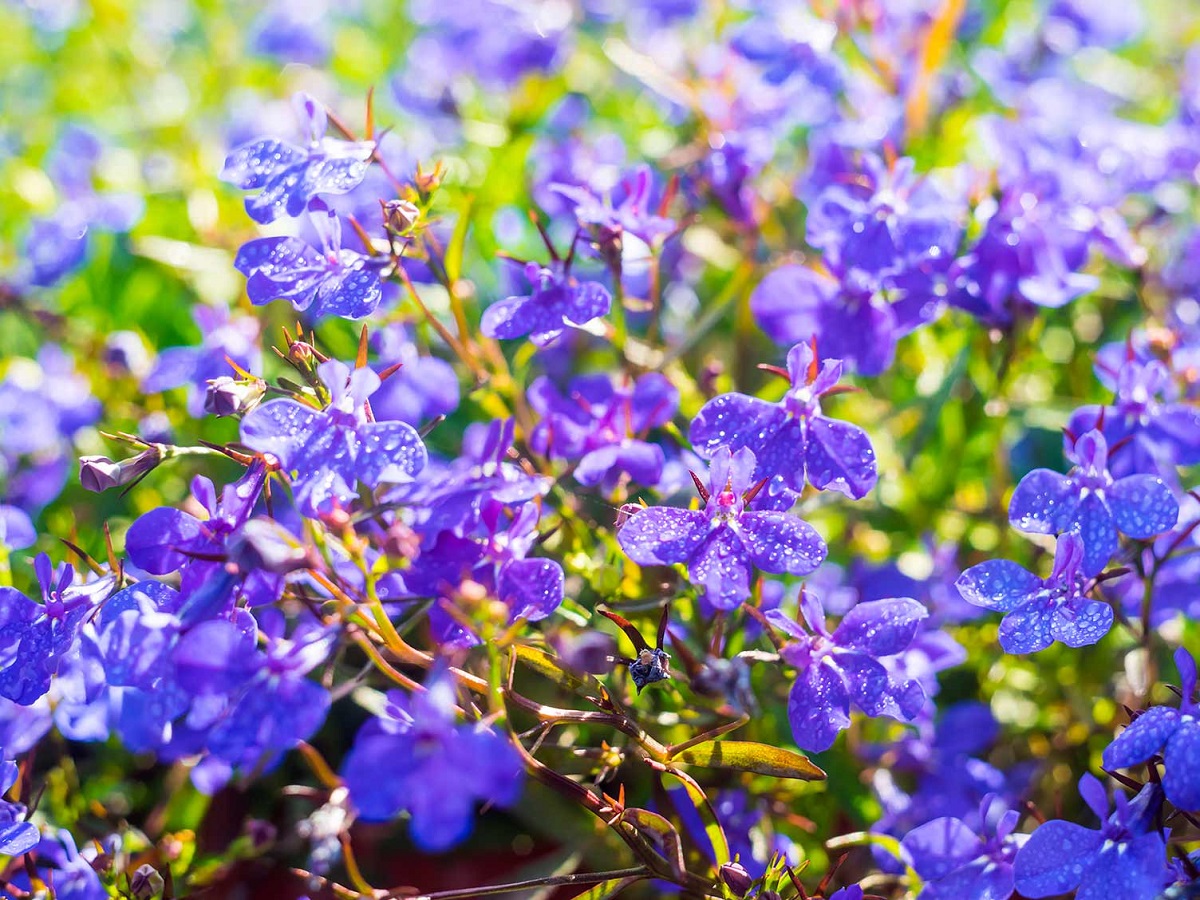
Lobelia – what are its soil requirements?
Lobelia needs to be planted in fertile and very permeable soil. This plant doesn’t tolerate excessive watering, which might lead to root rot.
If you plant lobelias in containers, make sure to line the bottom with a layer of drainage material, which provides proper conditions to the plant.
Is lobelia demanding regarding the place it grows in?
Lobelias are warmth-loving plants. If you decide to have them in your garden make sure to pick a spot in full sun for them – that’s where lobelia feels best. But you can also plant it in half-shade – in this case, expect poorer blooming.
How to sow lobelias?
Begin sowing lobelias early enough, indoors. Sow the seeds into a previously prepared soil, in which the plant feels optimal. Expect first sprouts after two weeks from planting the seeds. This way, you can grow the seedlings early enough, to move them into the designated place in a flowerbed mid-May.
Small seedlings are usually replanted into larger pots or boxes, with the spacing of 10 centimeters between each plant. If you decided to grow a lobelia with long stems, you can place it in the target containers which are going to be placed on a patio or a balcony, or simply plant it in the ground.
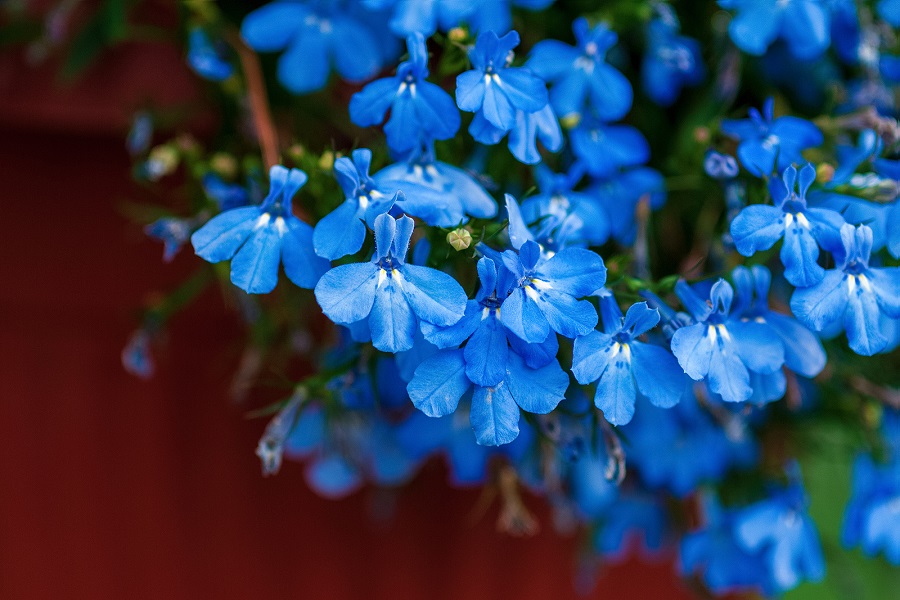
Lobelia – pruning
Lobelia should be deadheaded after blooming. This process is supposed to encourage the plant to bloom once more. It’s the only safe form of pruning without the risk of damaging the plant. Note that the stems should be trimmed only at their tops.
Lobelia – fertilizing
Lobelia requires systematic fertilizing. The reason behind it is that it develops a lot of foliage and blooming flowers.
Begin the fertilizing process at the beginning of April, and continue through the rest of the blooming season.
Use multi-ingredient products, designed for blooming plants. Supply the plant with the mix every two weeks.
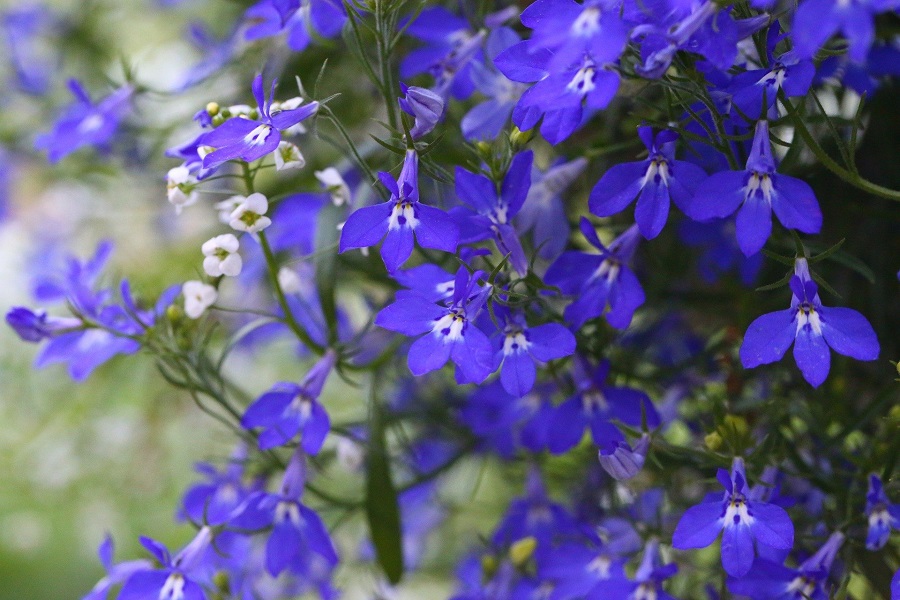
Lobelia – what are its potential diseases?
Lobelia is a plant which doesn’t like wet soil. If there’s an excess of moisture in the ground, it might cause black stains on the plant’s leaves. The disease is caused by fungal microbes.
Typical signs of such a disease include characteristic speckles which stand out from the natural color of the leaves. To avoid this issue, take care of the right soil for the plant and avoid wetting its leaves during watering.
Lobelia - pests attacking the plant
Lobelias planted in containers are much less vulnerable to the popular garden pests – slugs. Snails and slugs cause damage more often to plants growing directly in the ground.
Aphids are the most common pests attacking lobelias. Fortunately, they are easily spotted on the plant, which allows you to react quickly by using the right product. This way, you can eliminate the problem effectively.
Spider mites are other pests often appearing on lobelias. Because of their small size and hidden distribution, they are hard to notice. They typically appear at the bottom of a leaf. Using a proper chemical product is the only way to get rid of them quickly.
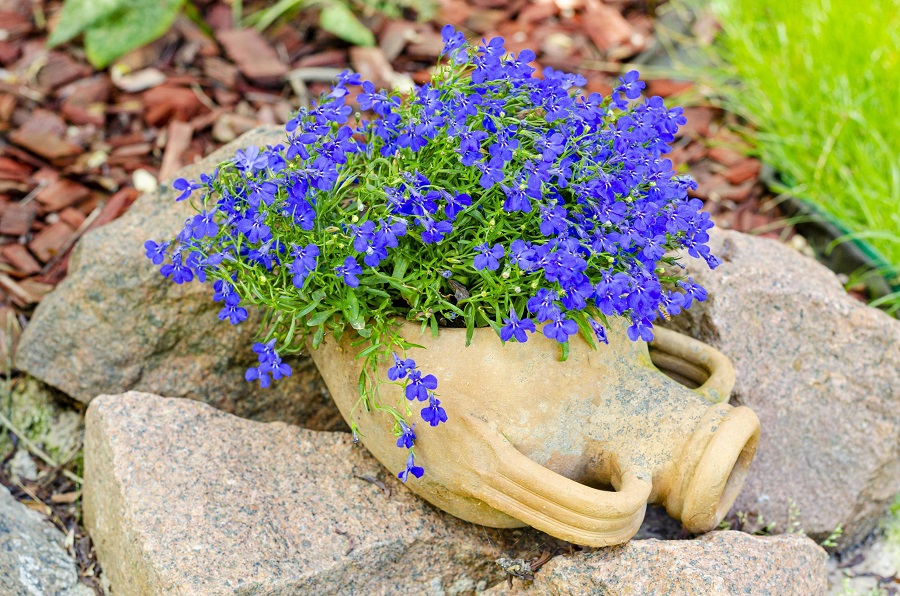
📍 Why are my lobelias wilting?
Lobelia tends to wilt in various situations. The most common causes are improper cultivation methods or exposure to fungi which quickly develop and damage the plant.
📍 When to sow lobelias?
Lobelia erinus is an unusual plant and a perfect decoration for every garden. Plan sowing it at the end of February or beginning of March. Put the seeds in special starting soil and cover them with plastic foil.
📍 How to trim lobelias?
Lobelia needs proper pruning. Cut just the tips of the stems to make them develop new branches. As a result, you will get a more bushy plant.
📍 What is the best spot for a lobelia?
Lobelia erinus prefers sunny places. But it can also grow in a half shade. You can plant lobelias directly in the ground or put them in containers.
Featured articles




